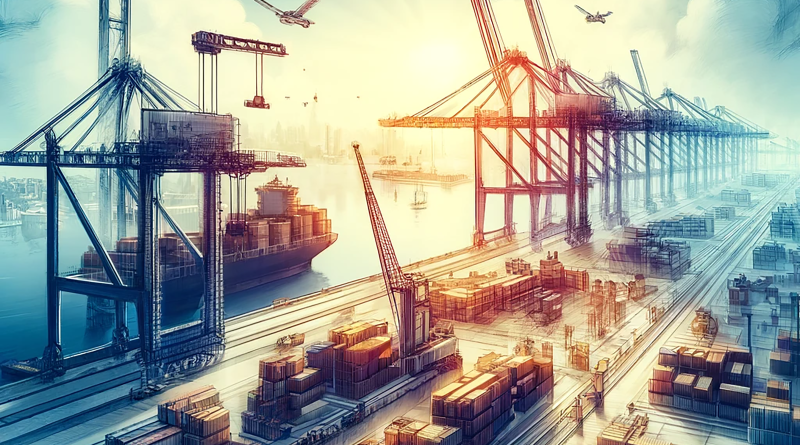$20 Billion Investment to Revitalize U.S. Maritime Infrastructure
The United States government has unveiled a monumental $20 billion initiative aimed at rejuvenating the nation’s maritime infrastructure. This strategic investment is poised to transform American shipyards, enhance domestic crane production, and upgrade port facilities, thereby reinforcing the country’s position in global maritime logistics.
The White House’s recent announcement detailed a robust plan to funnel $20 billion into the maritime sector, underscoring a significant commitment to enhancing the U.S.’s economic and strategic maritime capabilities. This investment will target critical infrastructure, including ports, shipyards, and the manufacturing of heavy-duty cranes, essential for loading and unloading massive cargo ships. Such a financial injection is not merely an expenditure but an investment in securing the U.S.’s future in maritime trade and logistics.
Enhancing U.S. Shipyard and Crane Production Capabilities
In an era where global trade dynamics are increasingly influenced by maritime capabilities, the U.S. is setting the stage to become a leader in shipbuilding and repair. By investing in shipyard facilities and domestic crane production, the initiative aims to reduce reliance on foreign manufacturers, particularly in the context of rising geopolitical tensions and trade disputes. The focus on enhancing domestic production capabilities is expected to revive the local manufacturing sector, create jobs, and stimulate economic growth.
U.S. ports are set to undergo significant modernization, with upgrades aimed at increasing efficiency and reducing bottlenecks in cargo handling. Improvements will include the integration of advanced technologies such as automated systems and better cybersecurity measures to protect against increasing cyber threats. These enhancements are critical in ensuring that U.S. ports remain competitive on a global scale, capable of handling the ever-increasing volume and size of cargo ships.
Strategic Importance and Expected Outcomes
The strategic implications of this massive infrastructure investment extend beyond economic benefits. Strengthening maritime infrastructure also plays a crucial role in national security, ensuring that the U.S. remains resilient against disruptions in global supply chains. Expected outcomes include increased cargo throughput capacity, reduced import and export times, and enhanced global trade partnerships. This initiative is also a forward-looking measure against potential future crises that could disrupt maritime traffic and trade.
While the promise of this $20 billion investment is vast, the road to realization will likely encounter several challenges. These include regulatory hurdles, potential delays in construction, and the need for skilled labor. Economically, while the investment will spur job creation and industry growth, it requires careful management to ensure that the funds are spent efficiently and that projects deliver their intended benefits without unnecessary cost overruns.
The U.S. government’s $20 billion investment in maritime infrastructure is a bold step towards securing America’s future in global maritime logistics. By focusing on enhancing shipyard capabilities, modernizing ports, and investing in domestic manufacturing, the initiative not only aims to boost the U.S.’s economic standing but also strengthen its strategic security. Despite potential challenges, the projected outcomes promise to make a significant impact on the nation’s economic landscape and its position in international trade.
Sources:
- White House Announcement
- Holland & Knight Insights
- gCaptain
- Smart Maritime Network
